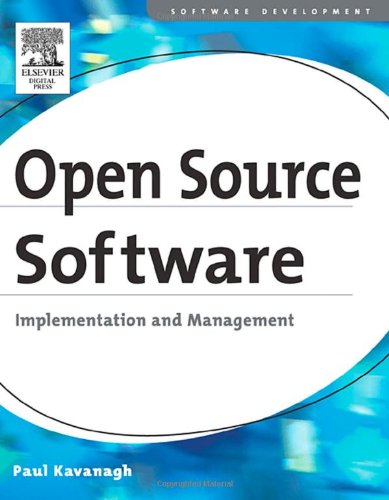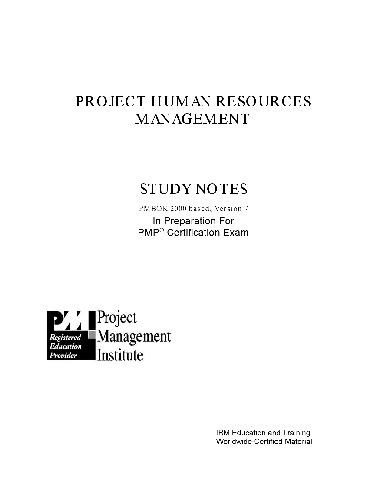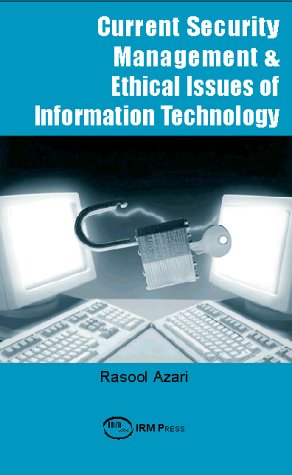Paul Kavanagh9781555583200, 1555583202, 9781417544400
Table of contents :
Team DDU……Page 1
Contents……Page 8
Preface……Page 18
Intended Audience for This Book……Page 19
How This Book Is Structured……Page 20
Acknowledgements……Page 22
1.1 Definition of Terms……Page 24
1.1.1 What Is Free Software?……Page 25
1.1.3 Is It Necessary to Adopt Open Source Wholesale?……Page 26
1.1.5 Does Open Source Require Different Business Methods?……Page 27
1.1.7 Is Open Source a Fad That Will Go Away?……Page 28
1.2.2 Software Companies……Page 29
1.2.3 UNIX……Page 30
1.2.4 BSD……Page 31
1.2.5 GNU and FSF……Page 32
1.2.6 Linux……Page 33
1.2.7 The Personal Computer……Page 34
1.2.8 The Internet……Page 35
1.2.9 The World Wide Web……Page 36
1.3 Summary……Page 37
2.1.1 Disruptive Innovations……Page 42
2.1.2 The Technology Adoption Curve……Page 46
2.1.3 The Open Source Stack……Page 48
2.1.4 Adoption of Specific Open Source Technologies……Page 49
2.2.1 Open Source Is the Heart of the Internet……Page 52
2.2.2 Linux Is Shipping a Lot……Page 53
2.2.3 Open Source Appliances Are Everywhere……Page 54
2.2.4 New Companies and New Businesses Use Open Source……Page 55
2.2.5 Open Source Is Broadly Adopted……Page 57
2.3 Examples of Open Source Systems……Page 59
2.4 Summary……Page 62
3.1.1 Why Your Right to View Code Matters……Page 64
3.1.2 Why Your Right to Change and Redistribute Code Matters……Page 66
3.1.3 You Can Buy from Different Vendors and Adopt New Platforms……Page 67
3.1.5 Open Source Allows Integration between Products……Page 69
3.1.6 Open Source Licensing Is Simpler and Less Expensive……Page 71
3.1.7 Open Source is a Good Solution for International Companies……Page 73
3.1.8 There Is a Large Pool of Skilled Open Source Professionals……Page 74
3.2.1 Deployment Platform……Page 75
3.2.3 Software Language, Architecture, and Implementation……Page 76
3.2.4 Data Architecture……Page 77
3.3.1 Open Source Has a Less Complete Level of Sales Support……Page 79
3.3.2 Specific Product Reviews Will Not Favor Open Source……Page 81
3.3.3 Open Source Products Are Not Bundled, Branded, or Integrated……Page 83
3.4 What Others Say about Open Source……Page 86
3.5 Summary……Page 87
4 Five Immediate Open Source Opportunities……Page 90
4.1 Create an Open Source Lab……Page 91
4.1.1 Review Existing Work……Page 92
4.1.2 Train Developers to Program in Open Source Languages……Page 93
4.2.1 File and Print Servers……Page 94
4.2.2 Manage Use of Windows Proprietary Features……Page 98
4.3 Build Some LAMP Applications……Page 99
4.4 Bring New Desktop Systems to the Underserved……Page 102
4.4.1 New and Small Businesses……Page 103
4.4.2 Franchises……Page 104
4.4.3 Call Centers……Page 105
4.4.4 Retail, Food Service, and Hospitality……Page 106
4.4.5 Government, Healthcare, and Education……Page 108
4.4.6 Unlicensed Software……Page 111
4.4.7 International Opportunities……Page 112
4.5 Migrate Applications and Databases to Open Source……Page 113
4.5.2 Replace Small and Old Database Applications with Open Source……Page 115
4.5.3 Migrate UNIX to Linux……Page 116
4.5.4 Evaluate and Purchase Packages on Linux……Page 117
4.5.5 Enterprise Application Software……Page 118
4.6 Summary……Page 119
5.1 Introduction……Page 122
5.1.1 Customization and Integration……Page 123
5.1.2 Organization Size……Page 124
5.2 Directory Services……Page 125
5.3.1 UNIX Mail Systems……Page 126
5.3.3 PC-Based Mail Systems……Page 127
5.3.4 Replacing Exchange……Page 128
5.4.1 Wiki……Page 130
5.4.2 Other Community Software……Page 132
5.4.4 Instant Messaging……Page 134
5.5 Complex Web Publishing……Page 135
5.5.1 Portal Components……Page 137
5.5.2 Open Source Content Portals……Page 139
5.6 Manage User Desktops……Page 140
5.6.1 Analyze Desktop Use and Licensing……Page 143
5.7 Other Possibilities……Page 144
5.8 Summary……Page 146
6.1 Contents of the Operating System……Page 148
6.1.1 FreeBSD……Page 151
6.1.3 Using the Shell . . …….Page 152
6.1.4 Recent Linux Improvements……Page 154
6.1.5 Scaling Linux up and Down……Page 155
6.2.1 The Many Versions of Linux……Page 157
6.4.1 Debian……Page 161
6.5 International Alternatives……Page 162
6.5.2 Booting from a CD……Page 163
6.6 Summary……Page 165
7.1 Infrastructure Services……Page 168
7.1.1 File and Print Services……Page 169
7.1.2 Directory Services……Page 170
7.2.1 Apache……Page 171
7.2.2 Other Web Servers……Page 172
7.3 Database Servers……Page 173
7.3.2 Analysis of Database System Sizes……Page 174
7.3.3 Open Source Database Choices……Page 185
7.3.4 Database Performance Is Good Enough……Page 187
7.3.5 Competing with Closed Code Databases……Page 189
7.4 Mail Servers……Page 190
7.5 Systems Management……Page 191
7.6 Summary……Page 193
8.1.1 The Open Source Desktop……Page 196
8.1.3 Limitations to Desktop Linux Adoption……Page 197
8.2 Graphical Desktops……Page 198
8.3.1 Deploying Browsers……Page 203
8.4 The Office Suite……Page 205
8.4.1 OpenOffice.org……Page 206
8.4.2 Competition in the Office Suite Market……Page 208
8.4.3 Comparison of Microsoft Office to OpenOffice……Page 211
8.4.4 Migration from Microsoft Office to OpenOffice……Page 212
8.4.5 Lock-in and Complexity……Page 214
8.4.6 When You Don’t Need an Office Suite……Page 217
8.5 Mail and Calendar Clients……Page 218
8.5.1 Professional Applications……Page 219
8.5.2 Drawing and Image Management……Page 220
8.6 Personal Software……Page 221
8.6.1 Running Windows Applications……Page 222
8.7 Summary……Page 224
9.1 Methodology……Page 226
9.1.1 Open Source Compared with Closed Code……Page 227
9.1.3 Open Source Development Tools……Page 230
9.1.4 Managing People……Page 231
9.2 Languages Used to Develop Open Source Products……Page 232
9.2.1 C and C++……Page 233
9.2.3 PHP……Page 236
9.2.5 Java……Page 237
9.3 Cross-Platform Code……Page 238
9.4 Summary……Page 241
10.1 Implementation Roles……Page 244
10.1.5 Communication……Page 246
10.2 Open Source Impact on Team Issues……Page 247
10.3.1 Releases……Page 249
10.3.2 Team Roles during the Process……Page 250
10.4.1 Resource Trade-offs……Page 251
10.4.2 Frequent Releases……Page 252
10.4.4 Watching for Problems……Page 253
10.5.2 Risk Management……Page 254
10.5.3 Example of a Risk Assessment……Page 256
10.5.4 Functional Specification……Page 258
10.6 Migration……Page 259
10.6.2 Assessing the Current System……Page 260
10.7.1 Hiring from the Community……Page 262
10.7.3 Repaying the Community……Page 263
10.8 Support……Page 264
10.9 Summary……Page 266
11.1 Types of Systems……Page 268
11.1.1 Extreme Systems……Page 269
11.1.3 Knowledge Management……Page 271
11.2 Tiered Design……Page 272
11.3.1 State Management……Page 274
11.3.2 Queuing……Page 277
11.3.3 Database Design……Page 279
11.3.4 Application Servers……Page 282
11.4 Interoperability……Page 283
11.4.1 Shared Data……Page 284
11.4.3 Application Integration Engines……Page 285
11.4.4 Web Services……Page 286
11.4.5 Data Formats……Page 288
11.5.1 Java……Page 289
11.5.2 .Net……Page 291
11.5.3 LAMP……Page 292
11.6 Summary……Page 295
12 The Cost of Open Source Systems……Page 298
12.1 Total Cost of Ownership……Page 299
12.1.1 Staffing Costs……Page 300
12.1.3 Software Costs……Page 302
12.1.4 Using Third-Party Application and Database Servers……Page 304
12.1.5 Pricing Open Source Software……Page 305
12.1.6 Pricing Closed Code Software……Page 306
12.1.7 Pricing Windows Software……Page 307
12.2 Types of Costs……Page 308
12.2.3 Sunk Costs……Page 309
12.2.4 Switching Costs……Page 310
12.3.1 Small Organization: Web Site……Page 312
12.3.2 Large Organization: Internal Use……Page 316
12.4 Summary……Page 318
13.1 Types of Licenses……Page 320
13.2 Licenses in Use……Page 321
13.2.2 Nonreciprocal Licenses……Page 322
13.3 Mixing Open and Closed Code……Page 323
13.4 Dual Licensing……Page 325
13.5 Other Intellectual Property Issues……Page 326
13.5.1 Provenance……Page 327
13.6 Summary……Page 328
A.1 Managing an Open Source Lab……Page 330
A.2 Installing an Evaluation Linux System……Page 332
A.2.2 Dual Boot……Page 335
A.2.3 Running Linux on Windows……Page 336
A.2.4 Running Windows on Linux……Page 337
A.4 Top Ten Reasons to Use Open Source Software……Page 338
A.5 Web Links……Page 339
B The Open Source Definition……Page 344
C.1 GPL……Page 346
C.2 Mozilla Public License……Page 355
C.3 The BSD License……Page 366
Bibliography……Page 368
About the Author……Page 374
Writing Environment……Page 375
Index……Page 376







Reviews
There are no reviews yet.